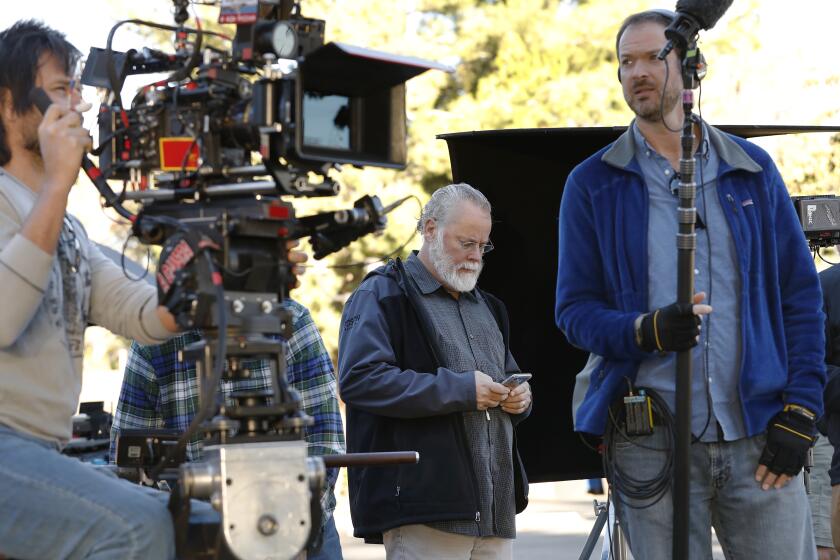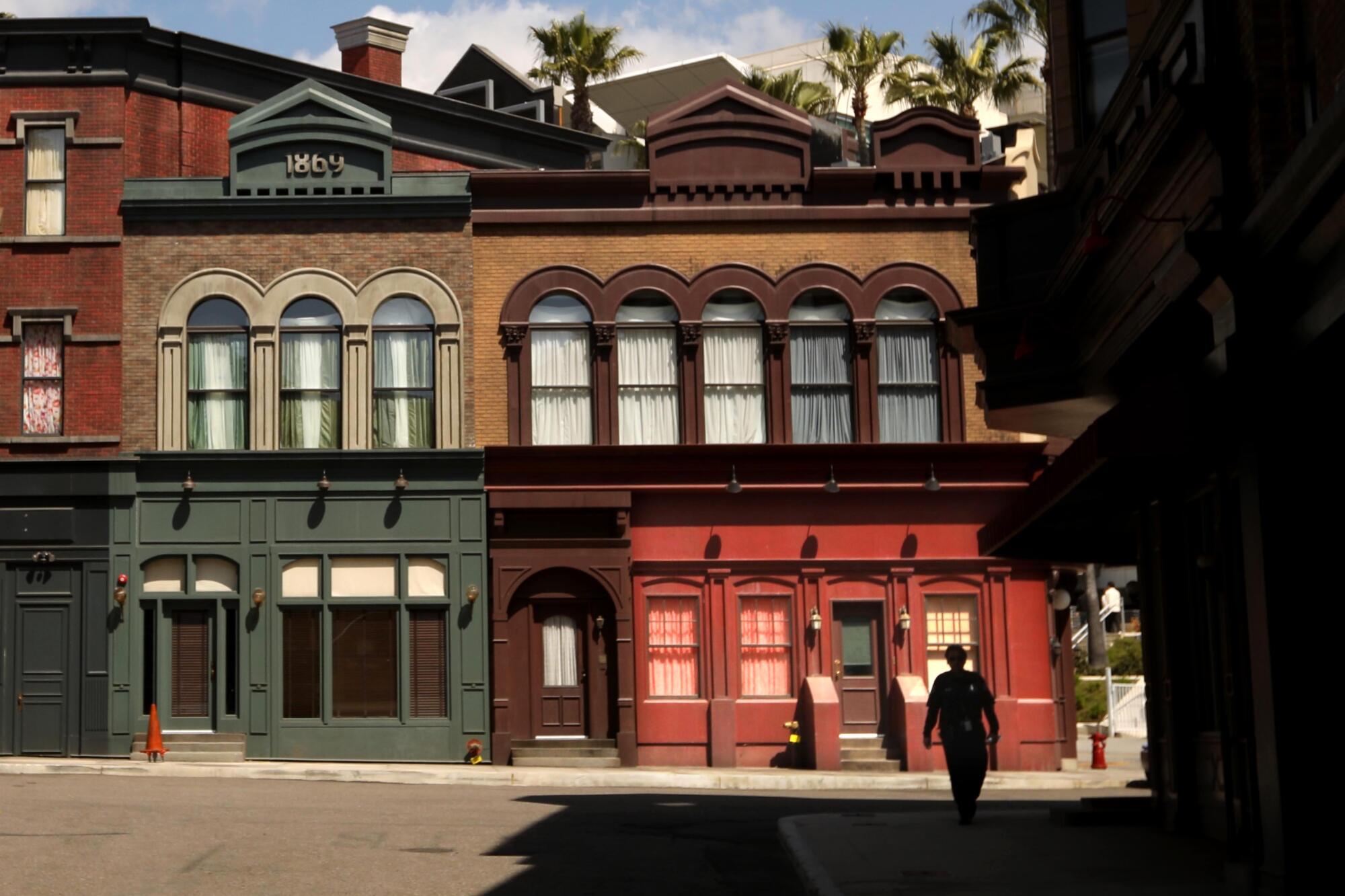
- Share via
Last summer, when the Hollywood writers’ strike had shut down film and television production, a crew of scenic painters at the legendary Fox Studio Lot took advantage of the lull to mess up New York City.
Work had recently been completed on a new set of façades meant to mimic Manhattan streets, but the result was too pretty and clean. Even the smooth gray concrete curbs looked suspiciously fresh.
“After the curbs were perfectly poured, we had a gentleman with a jackhammer come in here and chip away at them,” said Gary Ehrlich, president of studio operations. “It was slightly heartbreaking to see.”
Today, the curbs are suitably beaten up, with dings and black smears as if tires had been rubbing against them for decades. Fire escapes look corroded and other metal fixtures such as banisters have been coated to look old or rusty, while walls appear water-stained. A patina of age has settled over this faux city.
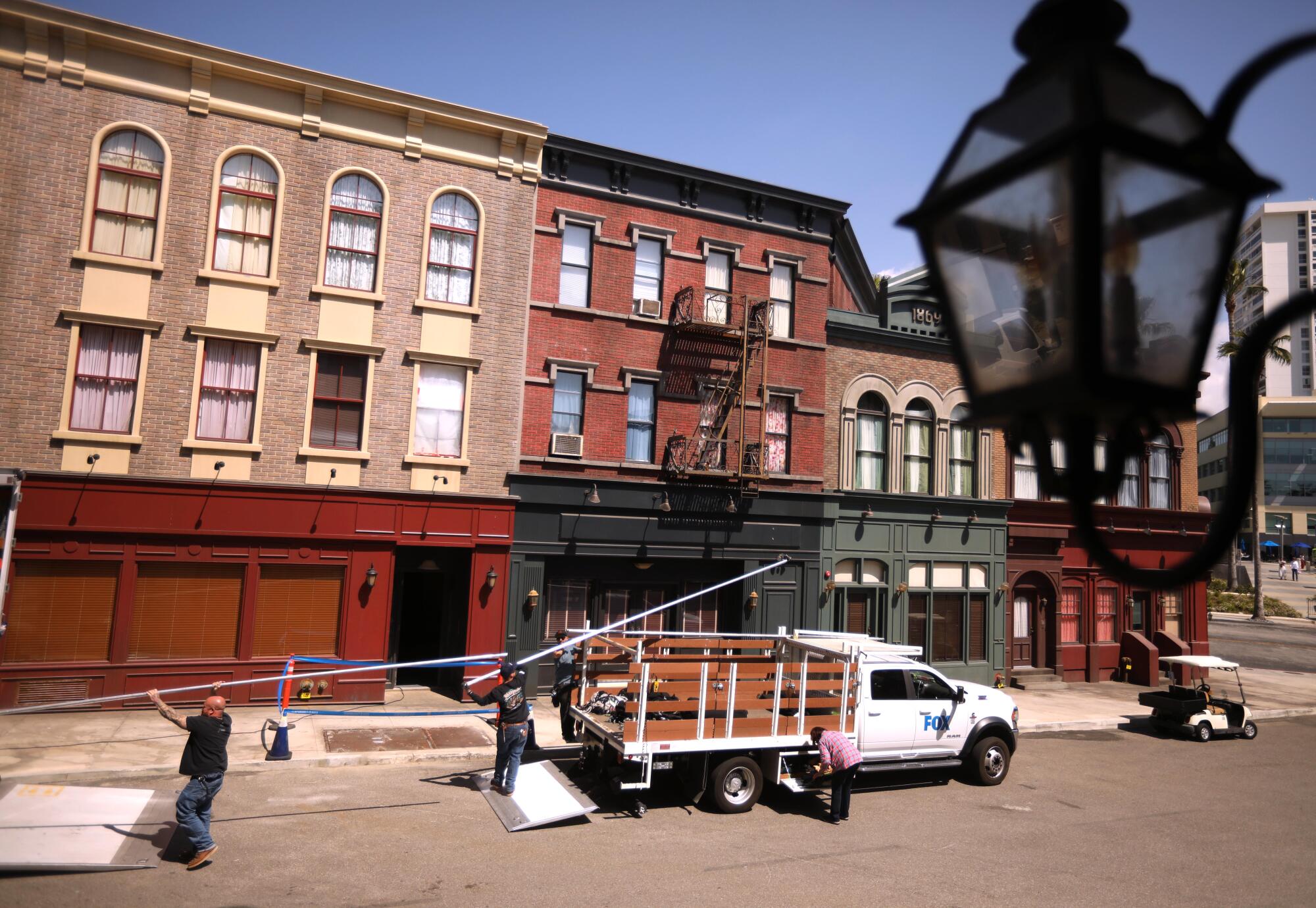
The painstaking besmirchment of New York Street was one more twist in the long saga of one of filmdom’s most famous outdoor sets. Looming near the front gate like an adult-sized playhouse, an earlier version of the set and now the new one have long served notice to visitors that they have arrived at a movie studio that is itself a leading character in Hollywood lore.
Its lineage is suitably rich in Hollywood flavor: In 1967 Fox was preparing to shoot the film version of “Hello, Dolly!,” a Tony-award winning musical set in 1890s New York City that ran for years on Broadway. The script included a spectacular outdoor parade with thousands of extras, and studio executives determined that it would be impossible to shoot on location in New York because the city had changed too much.
Fox production designer John DeCuir, who had already won Academy Awards for his design of “The King and I” and “Cleopatra,” came up with a streetscape that required more than 500 workers to labor for four months to build. The $2.25-million price tag made it the most costly movie set built to date, the UPI news service reported at the time.
It required more than 300,000 feet of board lumber and 22 miles of telephone wire strung between poles, the way it was in old New York. A painted 11-story office building façade obscured the view of the Century Plaza Hotel looming next to the lot, according to Barbra Archives, which chronicles the career of “Hello, Dolly!” star Barbra Streisand.
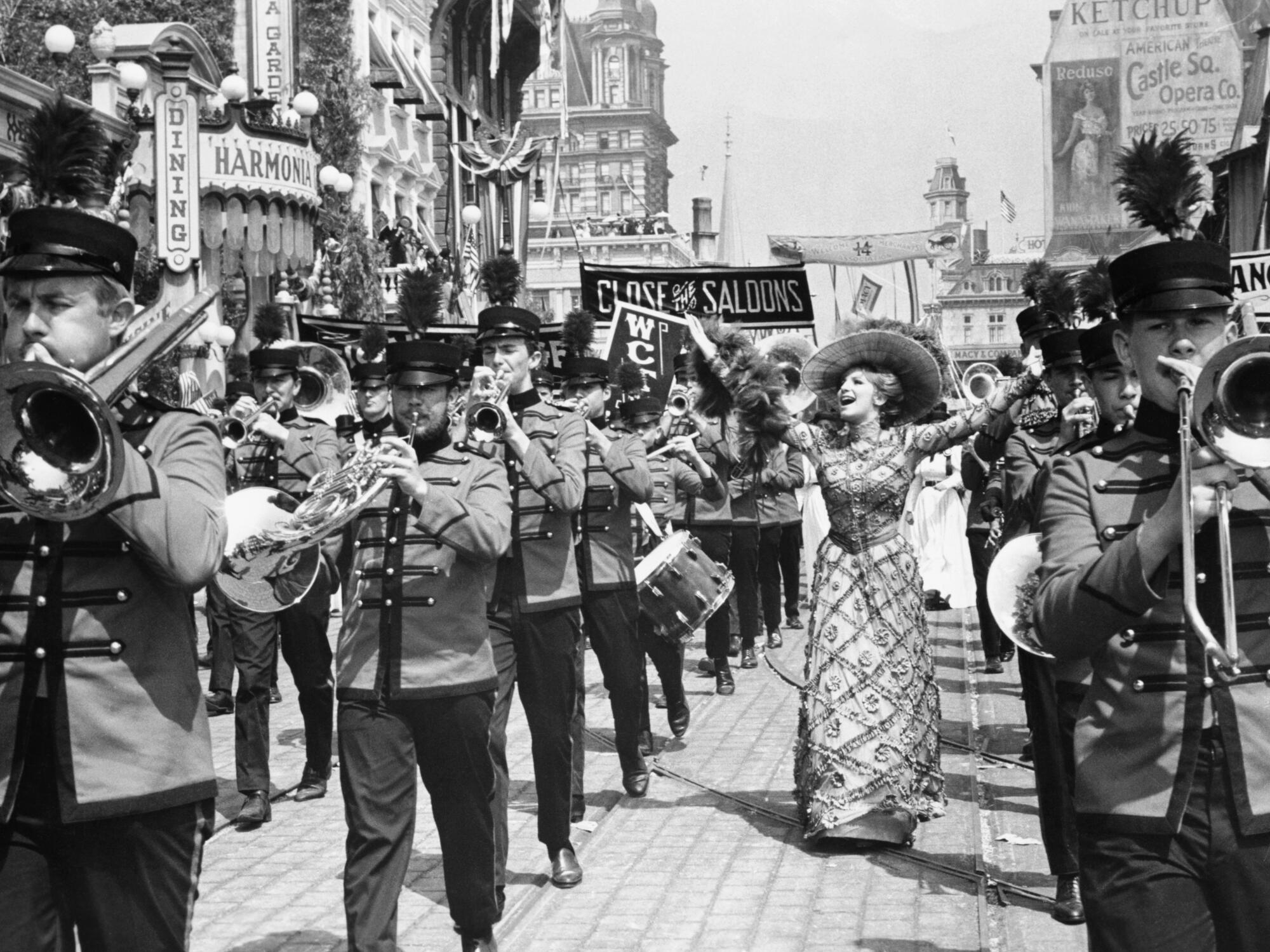
Dominating the street was a replica of an elevated train station and a steam locomotive acquired from a sugar plantation in Hawaii, where it had been used to transport workers.
On July 16, 1968, the Valley Times reported, “The parade stretching one-fifth of a mile and comprised of 675 persons in 16 units passed through a crowd of 3,108 film extras” in period costumes. Among the performers were the UCLA marching band and the Budweiser Clydesdales. The director was actor-dancer Gene Kelly.
As impressive as the set was, it was intended to be temporary, said Michael Whetstone, a production designer who worked on building the new version of New York Street.
“It was supposed to be torn down but wasn’t because it was too expensive” to remove, he said. At the time the studio was reeling from financial setbacks including a $30-million loss on “Hello, Dolly!,” according to the New York Times.
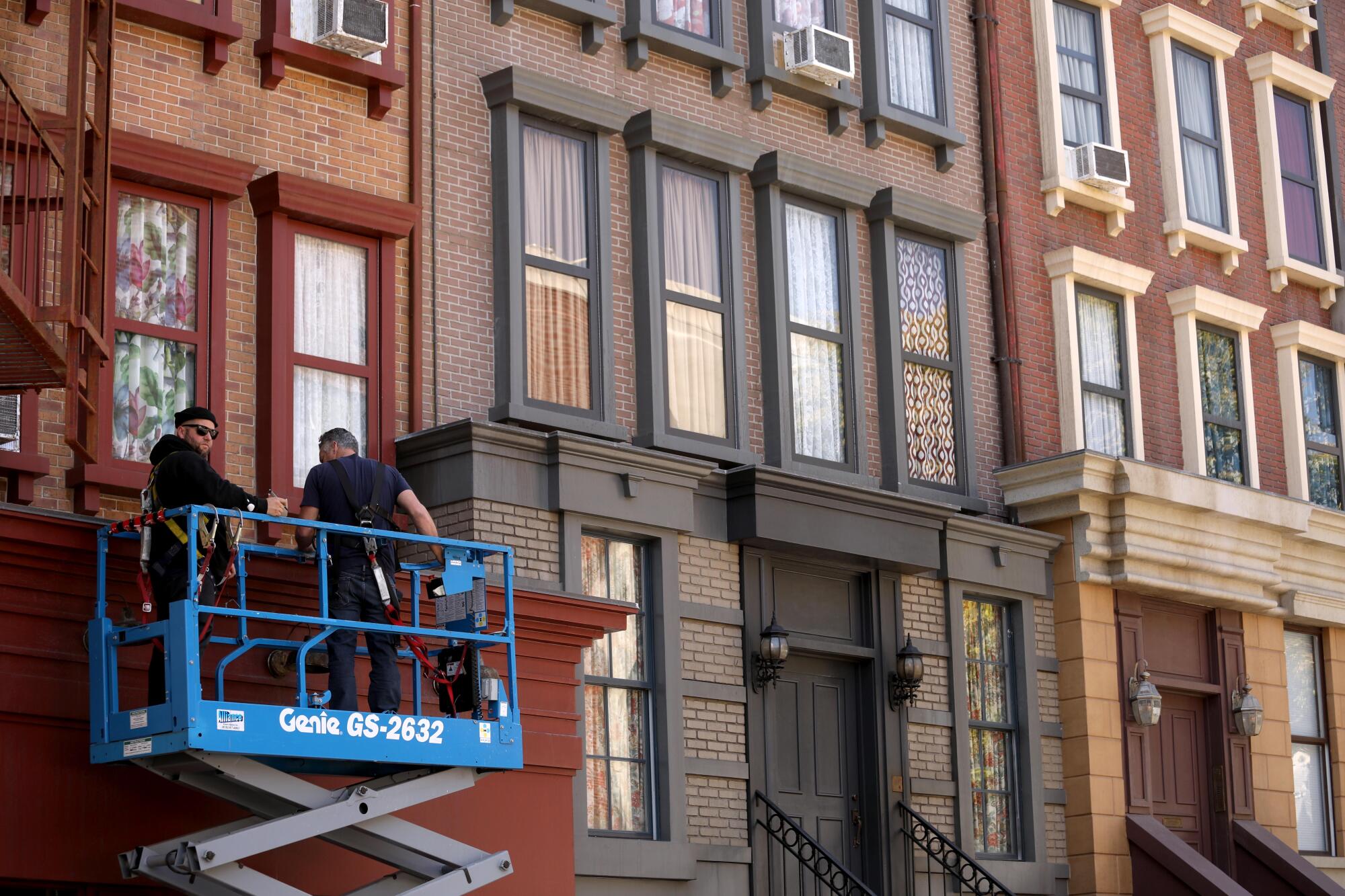
The set enjoyed a second, money-making act in the years that followed as Fox rented it out for use on pictures that included Warner Bros.’ comedy “Up the Sandbox,” starring Streisand, and MGM’s musical “New York, New York,” starring Liza Minnelli and Robert De Niro. Among the television shows that used it were “Charlie’s Angels” and “Moonlighting,” while Bruno Mars, Lady Gaga and other musicians used it for music videos.
But a few years ago, with the set showing its age, the studio started considering its replacement, Ehrlich said. “It had been exposed to the elements for five decades and was past its useful life.”
Fox tapped Culver City architect Nathan Moore of House & Robertson Architects to design something sturdier.
Construction required 49 tons of rebar and more than 1,000 cubic feet of concrete. The set is held up by 260 tons of structural steel and backed inside with 4,400 square feet of catwalks. Lighting and other electrical functions are supported with 21,000 square feet of conduit and wire, allowing productions to hook up to house power instead of rolling in generators. The set also had to comply with building codes and be tracked by city building inspectors.
The new New York Street was made to look like the city in the mid 20th century, a decision that required detailed craftsmanship such as window heads and sills that would have been carved out of wood in years past but were instead fabricated out of plastic foam and finished with plaster. Windows were installed to be easily replaced so productions can break them when scenes call for it.
Whetstone oversaw the project and, as part of his research, made several trips to New York, spending long hours on foot trying to get a sense of how light plays on buildings at night.
“I was literally walking Lower Manhattan from 10 p.m. to 4 in the morning taking pictures,” he said.
Studios and workers alike were eager to restart film and TV production after the Hollywood strikes concluded. What’s taking so long in California?
Where the original “Hello, Dolly!” set was based on a commercial section of 1890s New York suitable for a parade, Fox elected to make the new set feel like a neighborhood from a later era.
“It’s more Lower Manhattan, more Bowery,” Whetstone said. “Definitely the Lower East Side.”
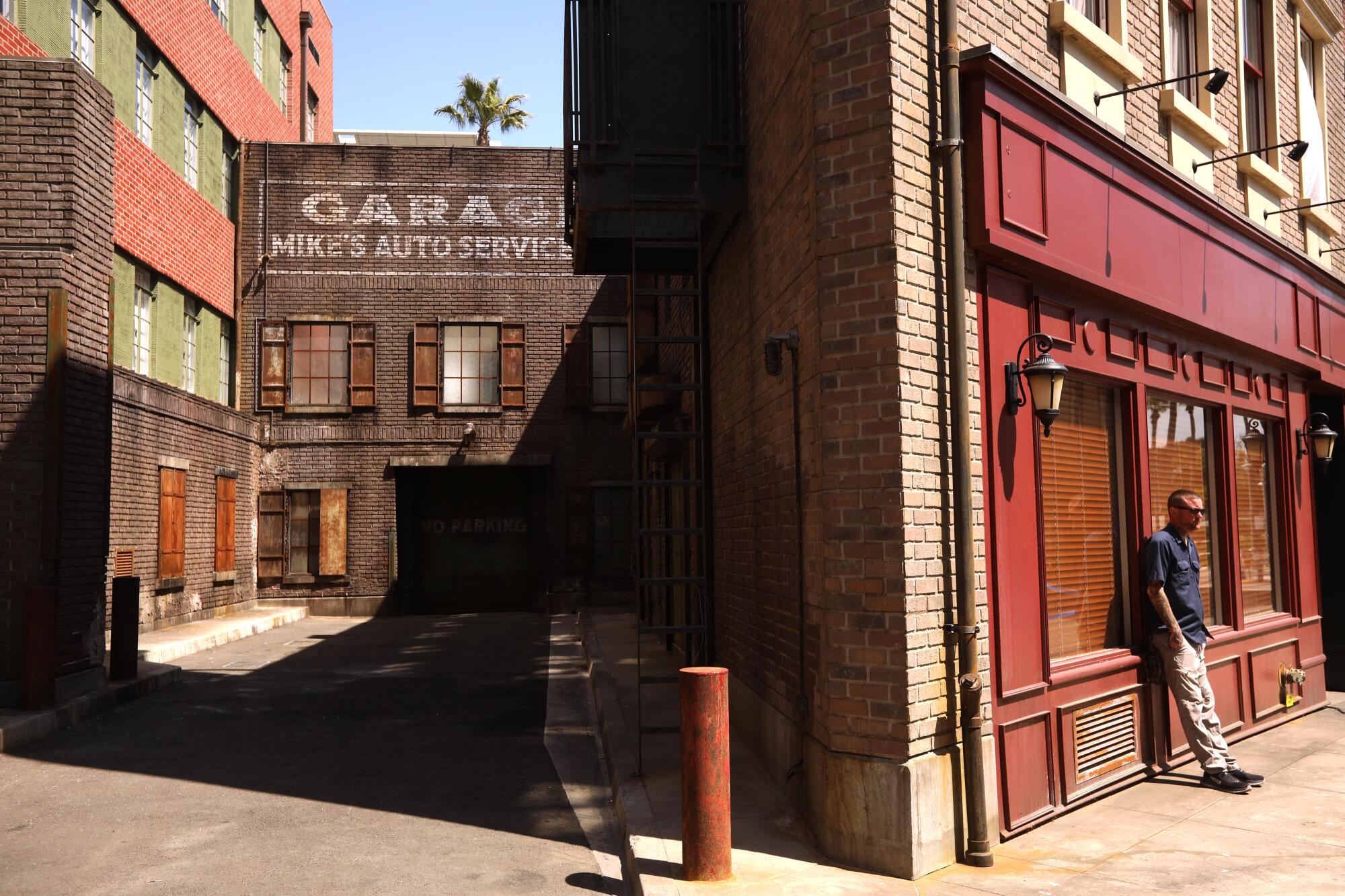
While the set is “a default vision of New York City,” said Whetstone, it also is intended to stand in for any major city. Through the years, Fox’s New York Street has subbed for Chicago, Washington, D.C., and Pasadena.
Even though improving camera technology through the years has made it easier to shoot on location, there are reasons filmmakers keep shooting on studio lots, said Jason E. Squire, entertainment podcaster and professor emeritus at USC School of Cinematic Arts.
As filming equipment and cameras got lighter and more portable, the more free-flowing New Wave cinema that emerged in the late 1950s and ’60s employed provocative camerawork.
“This liberation led to people shooting off the studio lot,” Squire said. “Filmmakers wanted to get away from the studio.”
But it has remained expensive to shoot a large-scale production in the real world with all the vehicles, equipment and personnel required to be transported and managed on-site.
“One of the key decisions early in any production is whether to build sets on a lot or shoot in a real location,” Squire said. “That depends on how intricate the sequences are going to be, how intimate. It’s a judgment call and a money call, and the money usually wins.”
Shooting behind studio gates also prevents uncomfortable collisions between fantasy and reality.
“On the lot you don’t have interference from civilians,” Squire said. “You can control traffic, you can control lighting. All of the equipment is at your beck and call.”
Whetstone recalled having to flee location shooting in downtown L.A.’s Arts District when working on Season 1 of “New Girl,” a Fox television comedy starring Zooey Deschanel that premiered in 2011.
“We started out shooting in downtown Los Angeles, and by the end of our fifth night shoot we had angered so many of the neighbors around in the community that we ended up building downtown L.A. on the Fox lot,” Whetstone said.
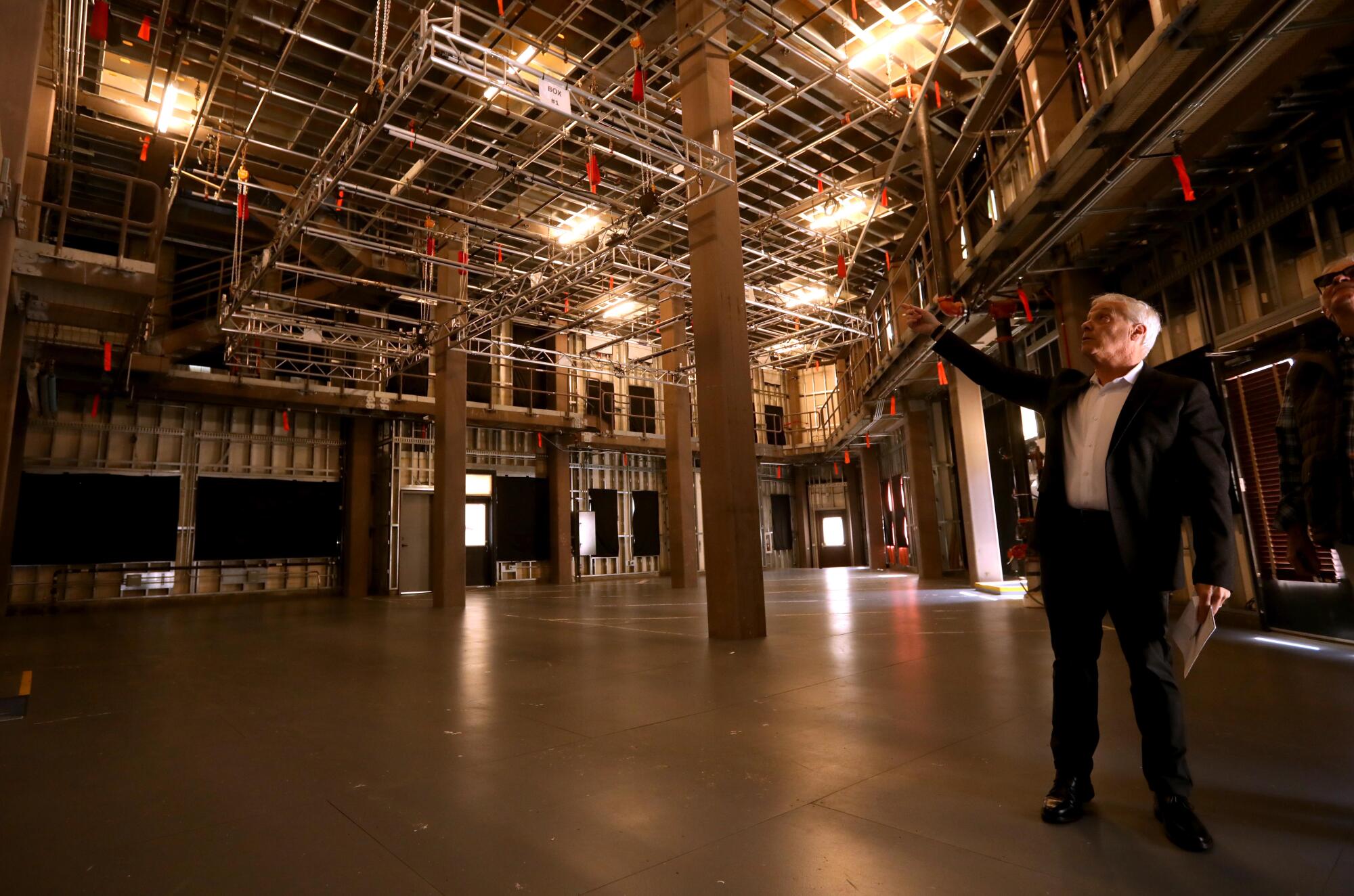
The makeover of New York Street is in addition to a planned $1.5-billion upgrade of the Fox Studio Lot announced last year by Fox Corp. that is to include more soundstages and offices. Fox Corp. retained ownership of the lot when Walt Disney Co. bought most of 21st Century Fox’s entertainment assets in 2019.
The upgrades come as the real New York mounts an aggressive effort to lure TV and movie producers from L.A. by building new studios and soundstages.
On New York Street in Los Angeles, Fox also was able to transform the set behind the façades, adding 4,000 square feet of interior space that makes it easier to meld outdoor and indoor action. The studio declined to reveal exactly how much the new multimillion-dollar set cost, but Fox wants it to stand for another half-century at least.
“This project was approached not just as temp architecture but as something more permanent,” Whetstone said. “We want this to last a long time.”
More to Read
Inside the business of entertainment
The Wide Shot brings you news, analysis and insights on everything from streaming wars to production — and what it all means for the future.
You may occasionally receive promotional content from the Los Angeles Times.
